Nowadays, flexible hoses replace many applications of rigid hose pipes. They move liquids or gases the same way other hoses do. The reason behind this popularity is that a flex hose is both flexible and strong. You can use them in many complex configurations. However, the suitability mainly depends on the type of flexible hose material.
Flexible hoses are widely used in almost all places where hoses are necessary. Since they can bend and stretch and don’t break, they can withstand cramped conditions. They are especially suitable for applications that involve constant vibration or movement. They make the setup easier and safer.
This article will explore what makes a hose flexible. We’ll examine the various materials used to construct flexible hoses and discuss what makes one better than another. It will go through each popular material and its pros and cons. In the end, we hope you will have a better idea of how to select the ideal hose material for your project.
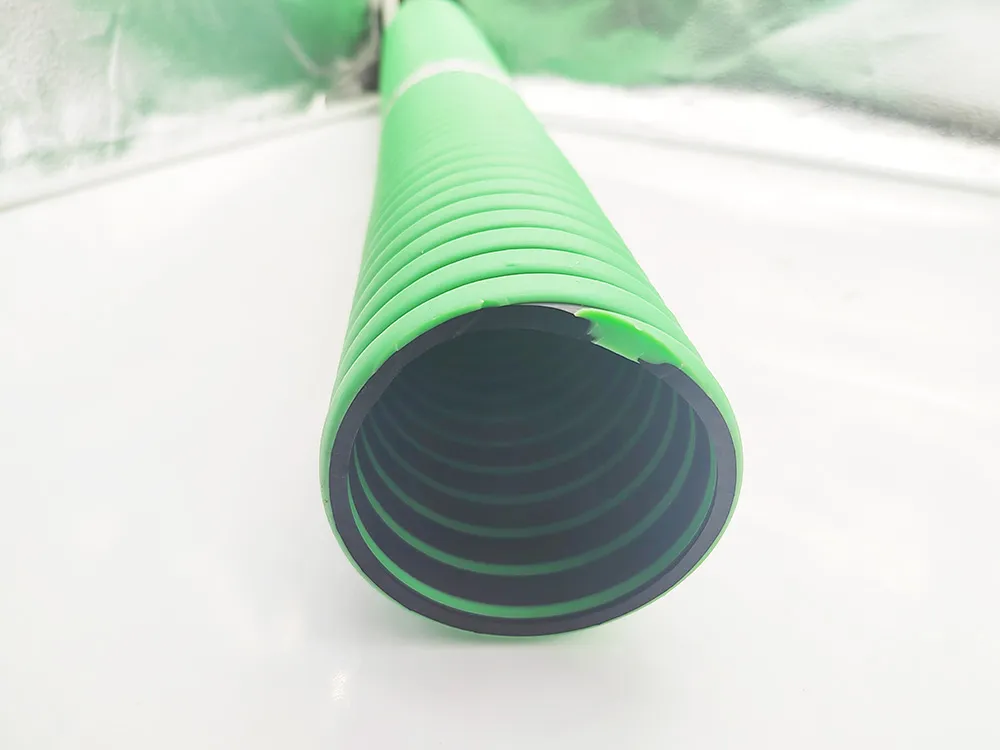
What is a Flexible Hose?
The name suggests what this hose is like. Yes, it is flexible and bendable to fit perfectly in tight spaces or expansions. Flexible hoses are powerful enough to withstand heavy loads. Whatever you do, unless you cross the limit, and it won’t break or kink.
Generally, this hose has three major layers: an inner tube, a reinforcing tube, and an outer coating. The inner layer is the most important part of every hose. This is where the conveyed material directly comes into contact. The reinforcement layer provides flexibility and strength. Finally, the main job of the outer cover is to protect the hose from external damage. The impact can be anything, such as abrasion, UV radiation, wear and tear, or any natural hazards.
Flexible hoses are used in many applications. In plumbing, they mainly join sinks and tubing to discharge water to and from them. In the HVAC system, they move air and fluids. These hoses are very important in cars or vehicles to pump or transmit gasoline, coolants, and air to and from the engines. Similar applications can be observed in other industries.
Flexible hoses can be of various types. (1) Spiral hoses have a spring-like reinforcement layer provided with it. This type of hose is the most common. However, if you need more strength, then (2) braided hose comes ahead. These hoses typically come with woven wire or fibers around the tube. (3) Corrugated hoses can bend more because the walls of the hose are grooved or ridged.
What Makes a Hose Flexible?
The most distinguishing quality of a flexible hose is precisely that: flexibility. Are all hoses flexible? Not only do materials affect flexibility, but so do other elements. These elements also contribute to the safety of your hose. Let’s get into detail.
Factor #1 Design and Construction
Most people make mistakes when deciding on the right flexible hoses. They think only material is responsible for flexibility. But technically, it is not. In terms of flexibility, the design and construction also play a very significant role. It is particularly necessary for heavy-use applications. Since strength matters, the material can not create flexibility alone. So, you must choose the right design and construction of the hose.
The first and most common structure is spiral hoses. They typically have a spring-like structure. Such design and construction usually allow for bending the hose or its expansion or reduction on the job. These hoses are quite popular for suctioning and delivering liquids and other dry powders.
The number of layers also matters. Whenever more layers are added, the hose’s stiffness increases, and its flexibility decreases.
Factor #2 Materials
The next factor and the key topic of this article is the flexible hose material. It plays the biggest role in hose flexibility. PVC and rubber are mostly used to make expandable hoses. Among the plastics, PVC and TPE are the most common materials. In contrast, the commonly used elastomers are EPDM, silicone, and Neoprene, among many others.
In fact, each of the above materials has its strengths and weaknesses. For instance, PVC is a relatively cheap polymer material; however, its chemical resistance is high. EPDM works best in outdoor environments, while silicone works well at high temperatures. Flexible hoses can also be made of metal, but their construction and shape must be corrugated. Note that the hoses made of metal last longer than hoses made of rubber.
Factor #3 Diameter and Wall Thickness
Along with structure and material, the hose size also matters when deciding flexibility. In this case, you should focus on two important parameters: inner diameter and wall thickness.
If you look at a hose, for instance, productivity reduces because when bent, the internal diameter for passage of the liquid or gas is altered. In this case, the structure is crucial so that the inner diameter is maintained consistently. Nonetheless, the chance to turn greatly decreases with greater diameters. Also, the thinner wall offers high flexibility but less durability.
Factor #4 Reinforcement
Many flexible hoses have reinforcement layers to strengthen them. As you are already aware, there are three major types of flexible hoses, which differ mostly in their reinforcing layer type. Yes, you guessed correctly. The reinforcement layers are spiraled, braided, and corrugated.
Typically, wire or synthetic fibers are employed. The choice is based on the project’s requirements, and each material has advantages and disadvantages.
Popular Materials for Flexible Hose
Flexible hoses generally come in various materials. All these materials have their unique advantages and disadvantages. Among these choices, choosing the right type is challenging. However, if you are familiar with their properties, you can quickly decide the correct option.
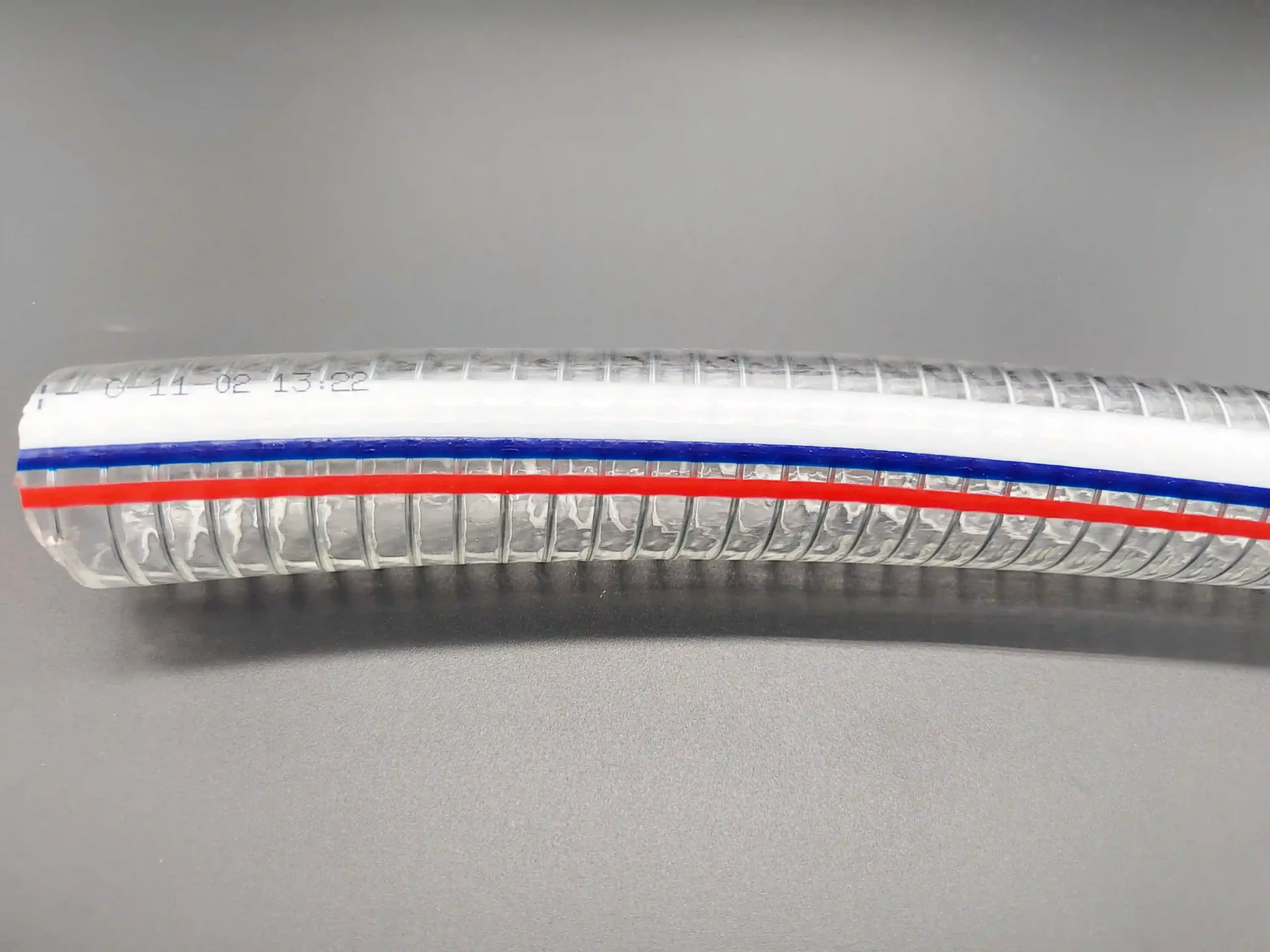
#1 PVC
PVC is a widely used plastic for the preparation of flexible hoses. This material is popular because it is inexpensive, easy to get, and adaptable. It is commonly used to manufacture discharge and suction hoses. You can find several reasons to use PVC for flexible pipes or hoses.
- PVC flexible hoses are resistant to wear and tear. Therefore, they ensure long-lasting services.
- Flexible PVC pipes are extremely lightweight. They can also be easily relocated, installed, or repaired whenever they are required.
- This flex hose is also resistant to a few chemicals. Because of this, people sometimes prefer this material for dealing with mild acids and alkalis.
- The biggest advantage of employing the use of PVC is that it is cheap. If you are searching for a flexible hose for room temperature usage, PVC may be the most suitable one.
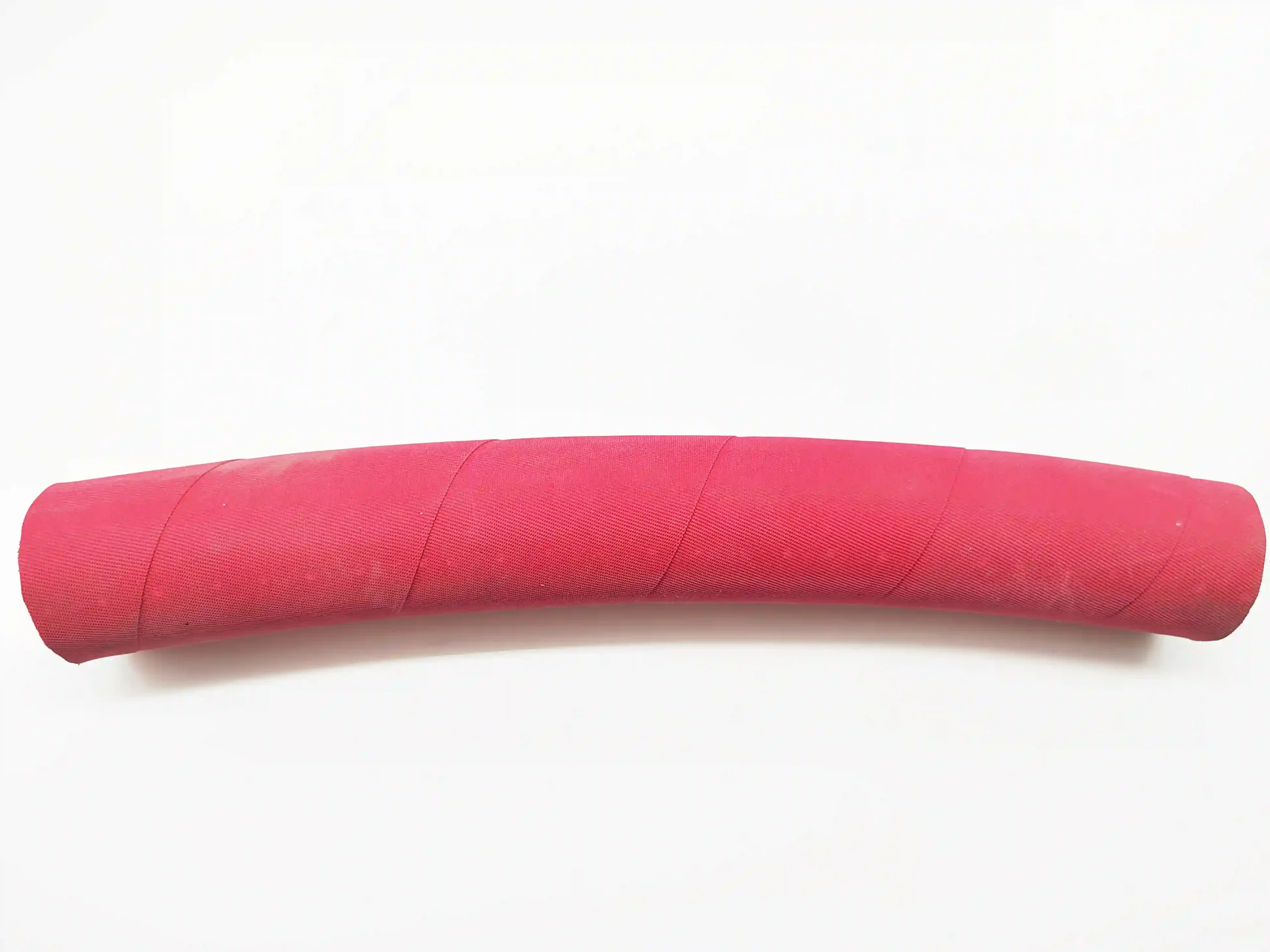
#2 EPDM
We are all more or less familiar with EPDM rubber. It is one of the most used synthetic rubbers, commonly applied in the manufacture of seal strips, hoses, pipes, and tubes. It is particularly suitable for outdoor applications. People often use it to make radiators, heaters, and garden hoses.
- EPDM hoses are flexible and can still resist the effects of UV radiation, ozone, and other bad weather.
- It is heat resistant from -55 to 135 degrees Celsius.
- The flexible EPDM hoses are used for a very long time, and in most cases, they do not degrade.
- EPDM hoses are very flexible and are not vulnerable to wear out quickly.
#3 TPE or Thermoplastic Elastomer
TPE means thermoplastic elastomer. They behave both like rubber and plastic. It means that you can get both properties from these two separate materials. However, this flexible hose material is particularly suitable for high-temperature uses. They are often used in the manufacture of foods and as fuel and medical tubes.
- Flexible hoses manufactured by TPE offer high flexibility. Elasticity means the flexibility of something against external forces.
- TPE hoses are lightweight.
- This material is 100% recyclable.
- Resistant to weather and chemicals.
#4 PTFE, FEP & Nylon Tubing
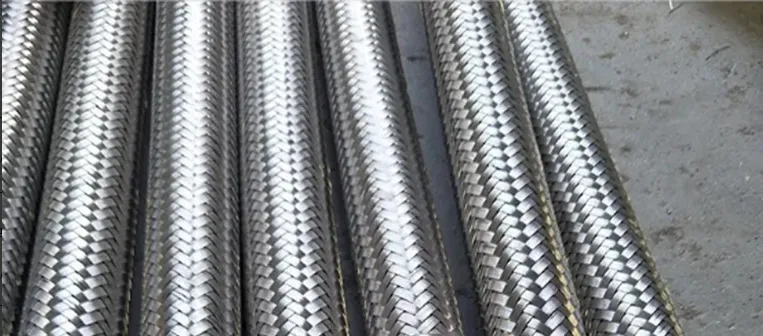
PTFE is an acronym for polytetrafluoroethylene, and FEP is an acronym for fluorinated ethylene propylene. These three materials are popular because of their great chemical and heat resistance. They are used in chemical and high-temperature air transfer and pharmaceuticals.
- The chemical resistance of the PTFE flexible hose, particularly the heat resistance, is very good. Their temperature rating is usually between – 200 C to 260 C.
- These three materials are typically non-reactive. You can use it to transfer aggressive chemicals.
- PTFE material typically makes a smoother surface.
- As usual, PTDE is also resistant to abrasion and impact. Because of this, you can use it to get long-lasting services.
#5 Polyurethane
PU, or polyurethane, is a famous plastic material used for flexible hoses. It is strong, flexible, and doesn’t tear easily. People prefer this material because it is surprisingly lightweight. You can often find its use in pneumatic systems, vacuum cleaners, dust collectors, and more.
- PU flexible hoses perform a great job against weather and wear. It doesn’t stiffen up even in cold weather.
- Flexible PU hoses are great for use with fuels and oils.
#6 Silicone
Silicone is a rubber that is one name for extreme temperature uses. They work fine in high and even low-temperature situations. Flexible hoses, made of silicone, are used in the medical tubing industry, car radiator hoses in the automotive industry, food processing applications, and pharmaceutical equipment.
- Silicone rubber is well suited for high and low temperatures with a range of -60C to 230C degree.
- Also, silicone is very flexible and can also withstand abrupt bends.
- People also use silicone in chemical transfer hoses.
#7 Composite Material
This flexible hose material is particularly prevalent for heavy-duty uses. If you cut a composite hose, you will find several layers of different materials. The most common materials used in this case are plastics, rubber, and metal. However, composite hoses are prevalent in chemical industries. People also use them in high-pressure applications.
- Composite flexible hoses are more robust than other hoses.
- They are specially designed to handle high movement. They are also used to handle aggressive fluids.
- Composite hoses usually offer more durability than others.
#8 Neoprene
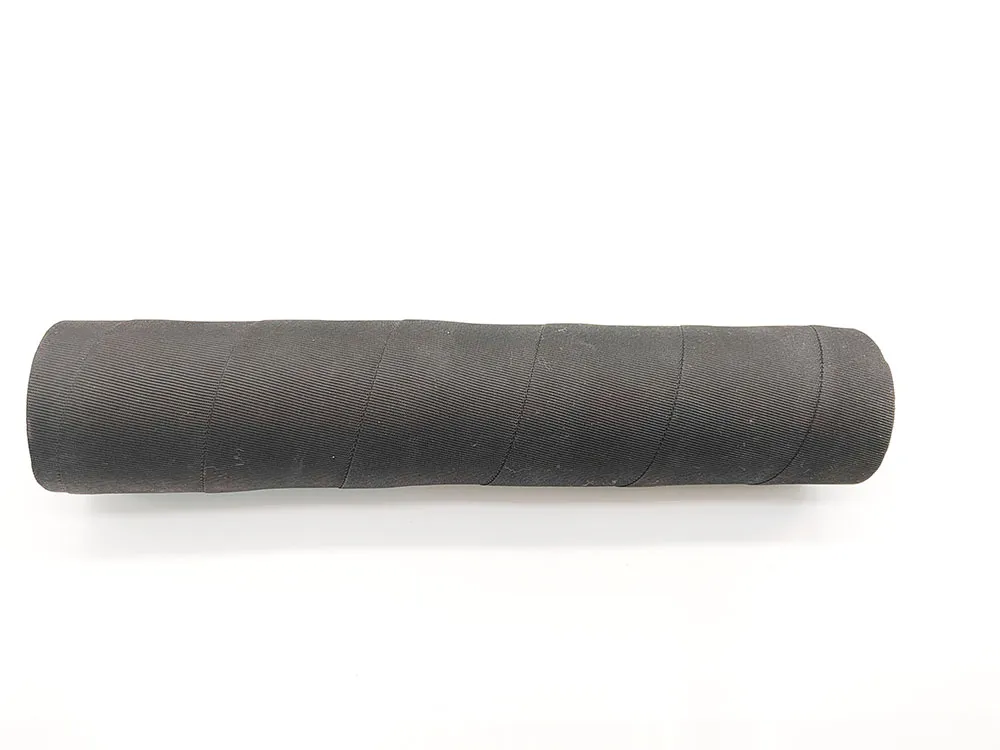
Neoprene is also a famous material for its excellent chemical resistance and weather resistance. Because of this, it is often used in fuel and hydraulic hoses, air conditioning hoses, and HVAC systems.
- Neoprene flexible pipes or hoses are commonly utilized in applications involving petroleum and oils.
- It is good for outdoor applications because of its resistance to deterioration.
- Neoprene is quite flexible. Even in cold conditions, it remains flexible.
- It provides moderate temperature ranges of -40°C to 120°C.
#9 Steel and textile Reinforcement Material
Steel is the major material used in the reinforcement layer. Plastic or rubber is typically reinforced with steel wire, which strengthens most hoses. However, people also use textile fibers as a reinforcement material. Basically, steel and textile reinforcing are used in hydraulic, power-steered, and industrial high-pressure hoses.
How to Choose the Best Flexible Hose Material?
All of the flexible hose materials mentioned above are suitable for making flex hoses. However, the right choice depends on your application’s particular use. The following five steps can lead you to your right destination.
Step #1 Know Your Application Requirements
This criterion is considered to be the most important when choosing a flexible hose. In this step, pay attention to five further values. What’s your project’s working temperature? Does it involve high heat or extreme low heat? Silicone and PTFE could be your ideal choice if you need temperature resistance above 100 degrees Celsius.
What is the working pressure in your system? Try your best to find out if the hose will be subjected to low, medium, or high pressure. In this case, you must focus on the safety factor, which is normally 4:1 or 3:1. The left value is the burst pressure, and the right value is the working pressure. For example, if a hose has 100 MPa working pressure, it must have a burst pressure rate of 400 MPa or 300 MPa. Note that the exact ratio depends on standards.
Next, it is necessary to determine what kind of fluids or direct gases are to be conveyed through the hose. Also, note that your hose may come in contact with corrosive materials. Therefore, you must ensure that your hose can perfectly operate transferred liquid.
The next thing you must focus on is flexibility. Does your project involve compact spaces? If so, you must choose a hose material that offers the optimum flexibility. Last, ensure the flexible hose is very durable. If you go in for more strength, then go for EPDM, PVC, or metal.
Step #2 What Standards Your Project Follow?
After you are aware of your project needs, you must check the standards your project follows. Different types of standards are widely used in many countries, such as ISO, DIN, EN, and SAE.
Step #3 What’s Your Budget?
Last but not least, costs have to be weighed against quality, warranty, and success rate. Your project might require a maximum room temperature. For instance, a flexible hose with a high-temperature rating may not be a wise decision for this situation. Therefore, constantly balance the project requirements with your overall budget.
Summary
Several factors, including the design and structure of the hose material used in the construction, fix the flexibility of the hose. These three characteristics are particularly important for flexible hoses. Nevertheless, flexibility depends on other aspects like reinforcement and hose size.
Actually, there are so many flexible hose materials; however, those are popular enough, such as rubber, silicone, PVC, and PTFE hoses. Stainless steel or textile materials are used only for reinforcement. These materials, therefore, come with their advantages and uses.
Choosing between these materials can be a little tricky. But if you know their properties, you can quickly relate them to your project needs. If you need any help in choosing the right material, feel free to contact our customer support team.
